We are pleased to announce the release of the new version Stimulsoft Reports and Stimulsoft Dashboards 2021.1, which is now available for download. This major release comes with the .NET Core compilation, the ability to get data from Google BigQuery and use PDO drivers for PHP, a new robust Table of Contents component, and many new features for Table, Pivot, List Box, and other components.
Compilation in .NET Core
In the new version, when using the .NET Core framework, we have added support for compilation for reports. Now you can use all the reporting tool features like compilation at runtime, functions, publishing reports as classes. Compilation for .NET Core 3.1 is only available on Windows systems, and .NET 5.0 is available on all supported systems.
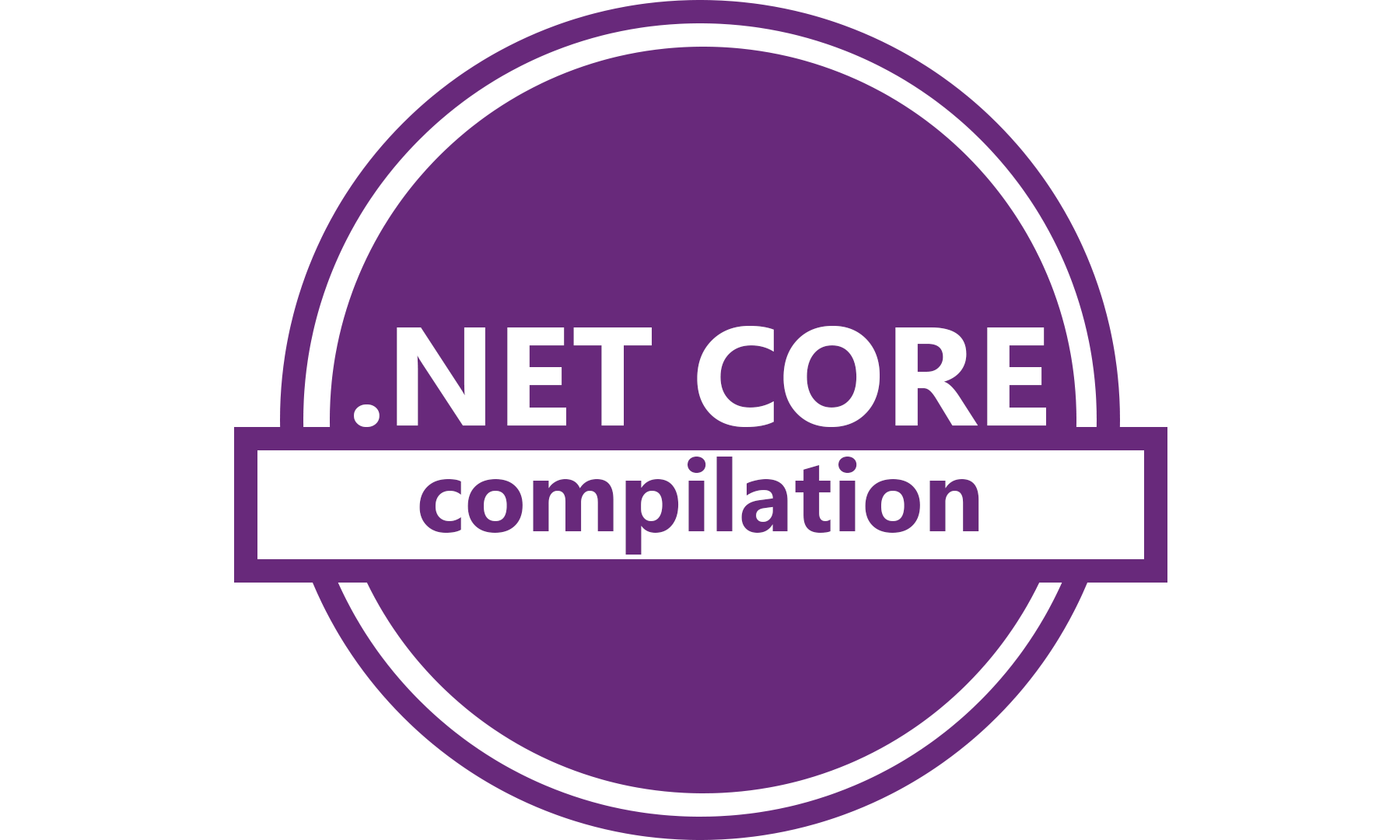
The new component - Table of Contents
In the 2021.1 release, we added a new report component - Table of Contents. This component will help you create an interactive table of contents for your report without writing any code or scripts. Just add it to the template and mark the report component for which you want to generate content. When the report is rendered, a table of contents with navigating the report will be generated. You may find this component in the items list from the Bands menu on the Insert tab.
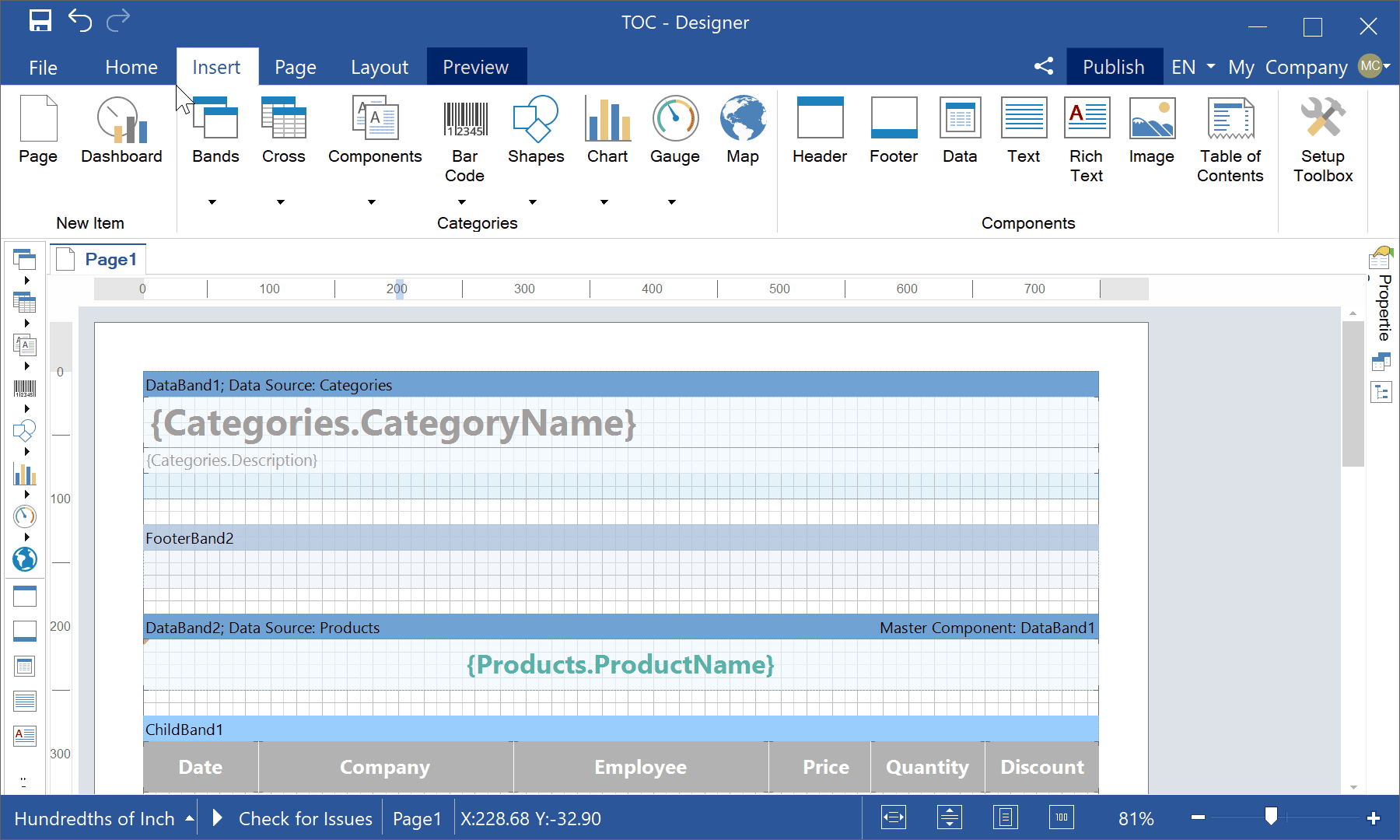
The new adapter - Google BigQuery
Starting with this release, directly from the report designer, you can connect to the online service - Google BigQuery. To do this, in the data source creation window, select the BigQuery type, fill in the data storage access fields or use an authorization file. Once you have the data, you can create reports and dashboards from it.
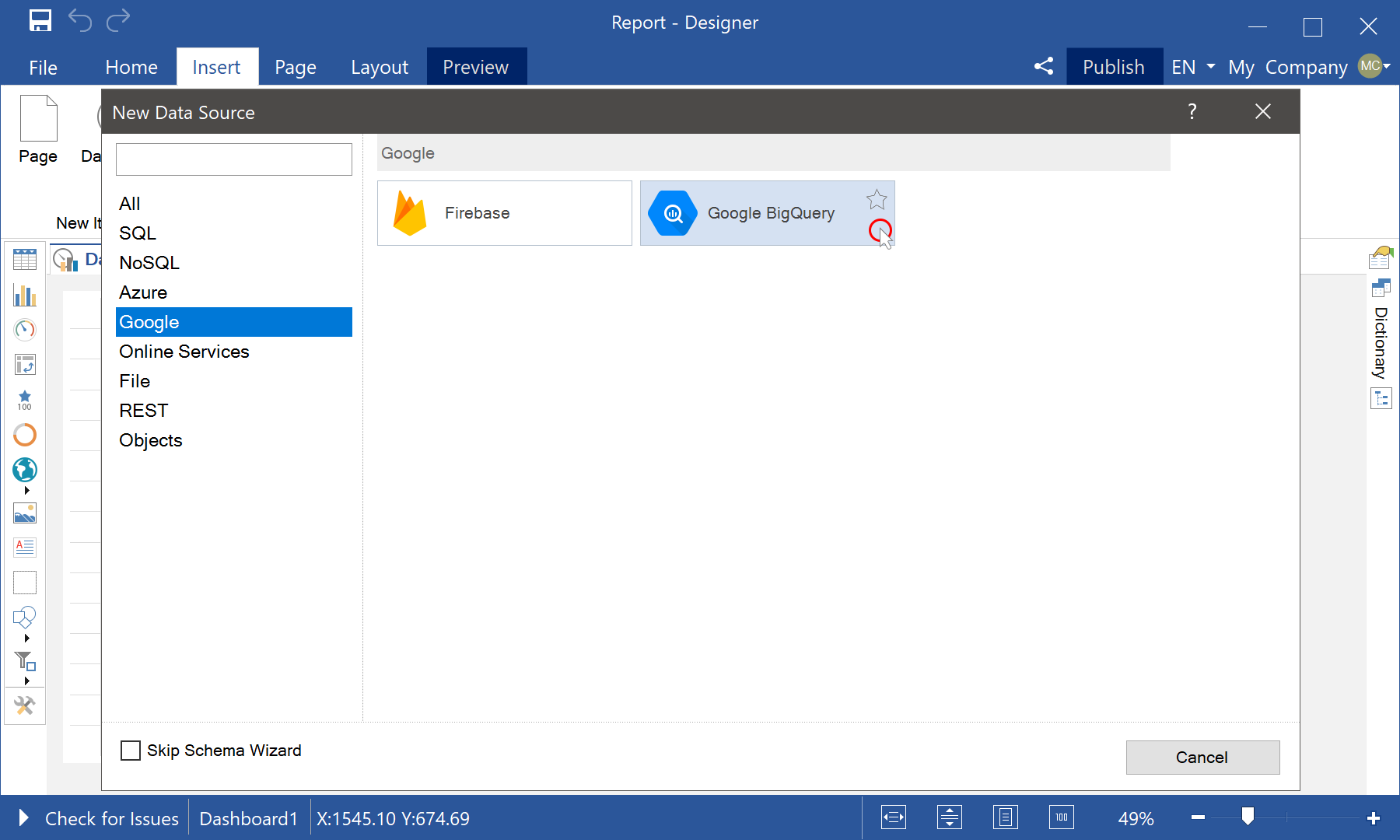
Cross-filtering of elements
Starting with release 2021.1, you can define whether to filter data from other elements to the current element. Each dashboard item now has the Cross-Filtering property. If this property is set to False, then filters from other elements will not affect the current element.
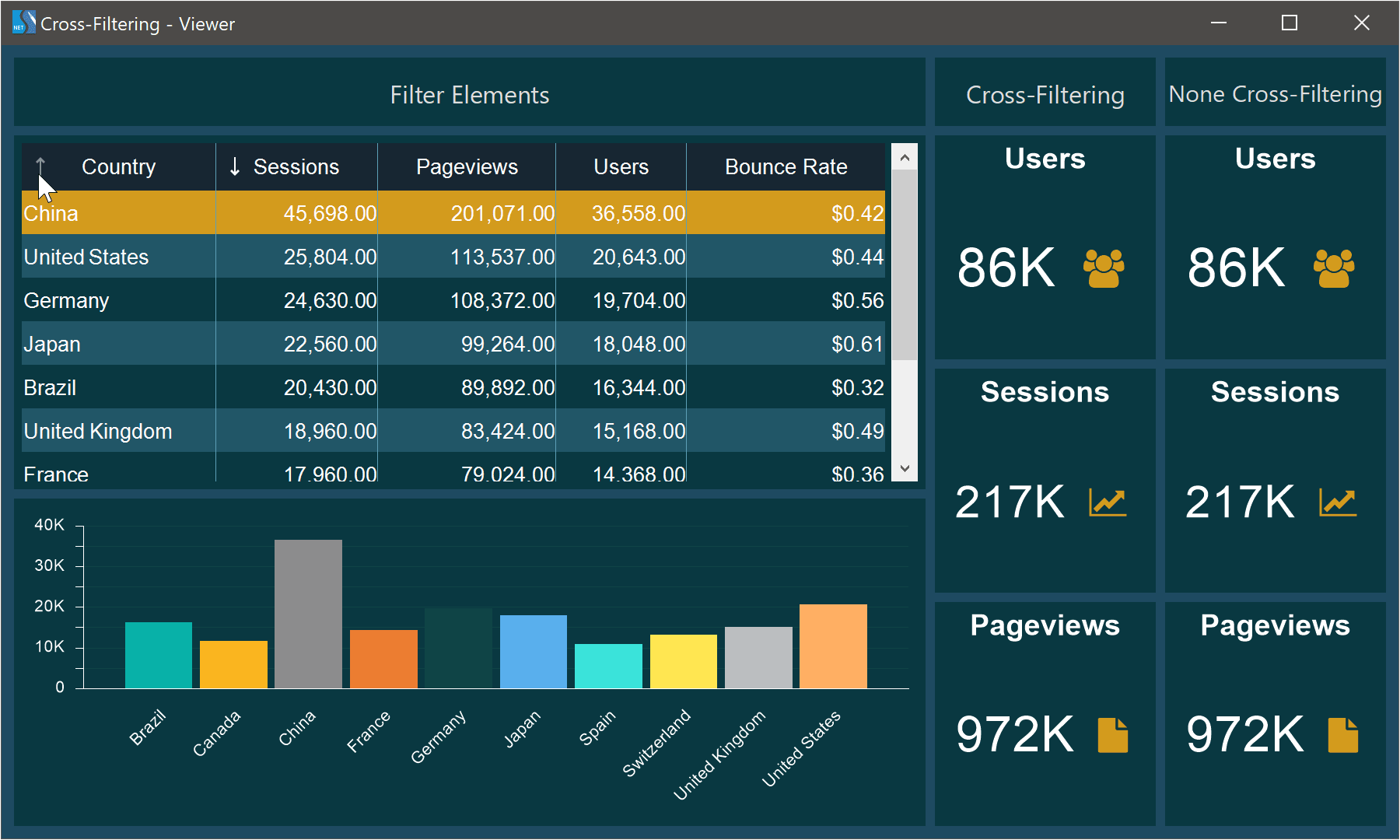
Horizontal filtering
The List Box filtering element is available in the report designer since the first release of dashboards. It is a vertical list of values on the dashboard panel by which you can filter dashboard data. Starting with release 2021.1, you can display the values of a List Box item as a horizontal list of values. Open the element editor and set the Orientation parameter to Horizontal.
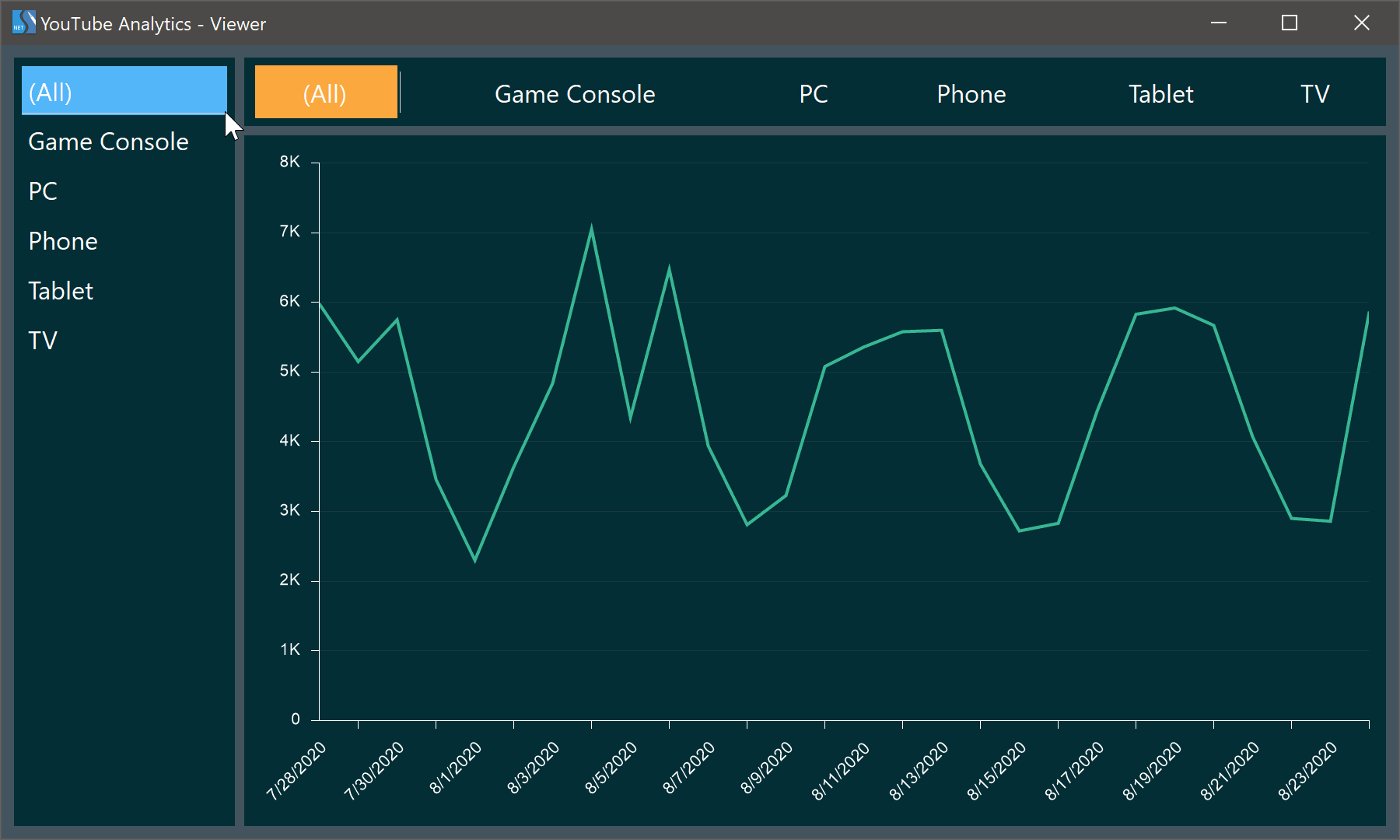
The new functionality for Table
Starting with version 2021.1, we have expanded the capabilities of the Table element in the dashboard. For the Table element, you can specify the required number of fixed columns that will not change their width. For each column of the table, you can set its width or range of width and enable the ability to wrap words in the column. Besides, when viewing a dashboard with a Table element, you can change the columns' order by simply dragging the column to the required location.
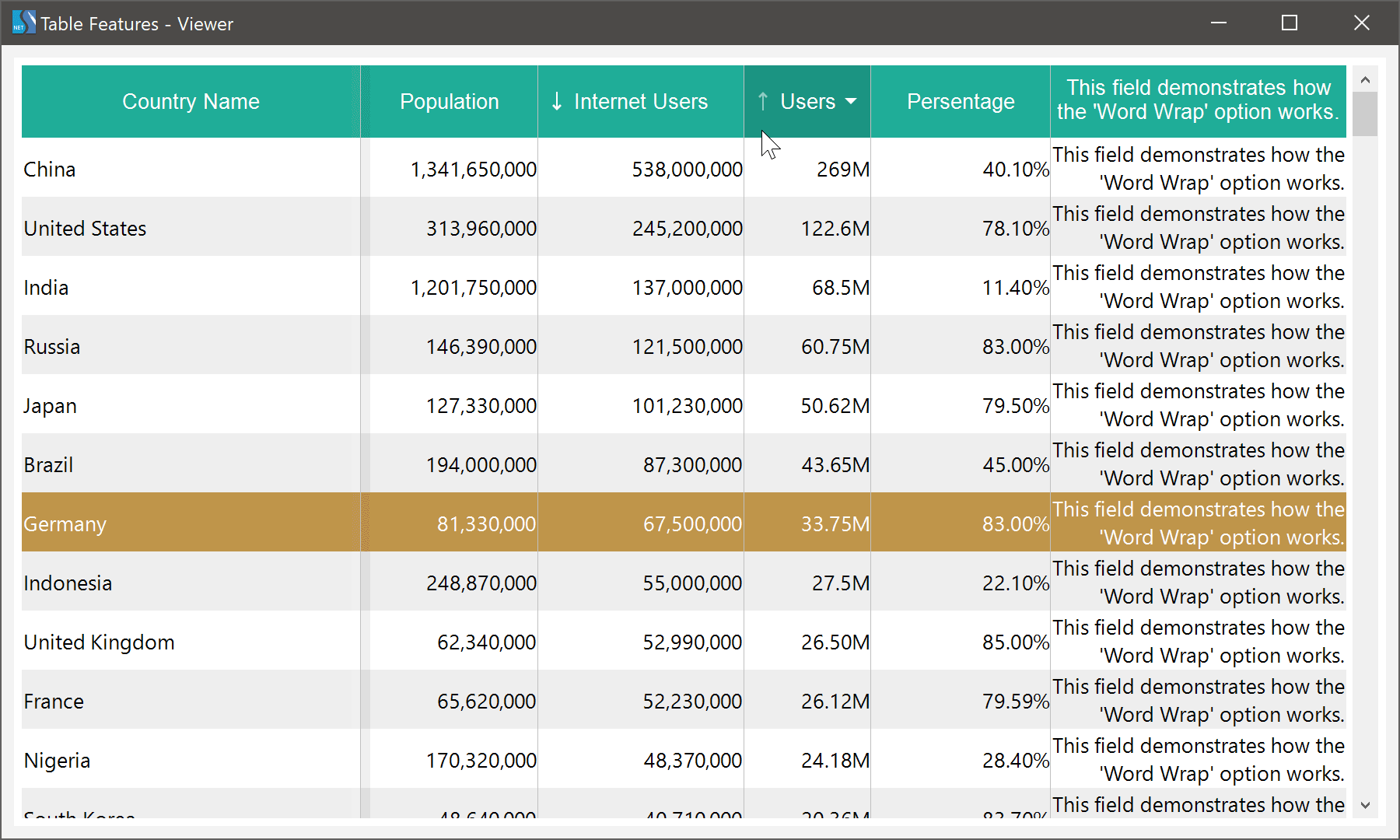
The new functionality for Pivot
Now, when using the Pivot element on the dashboards, you can flexibly customize it. First, as for the Pivot element, you can specify the column width and enable wrapping the words. Second, you can disable displaying totals for columns or rows of the Pivot element, and, if necessary, you can change the header of the summary column or row.
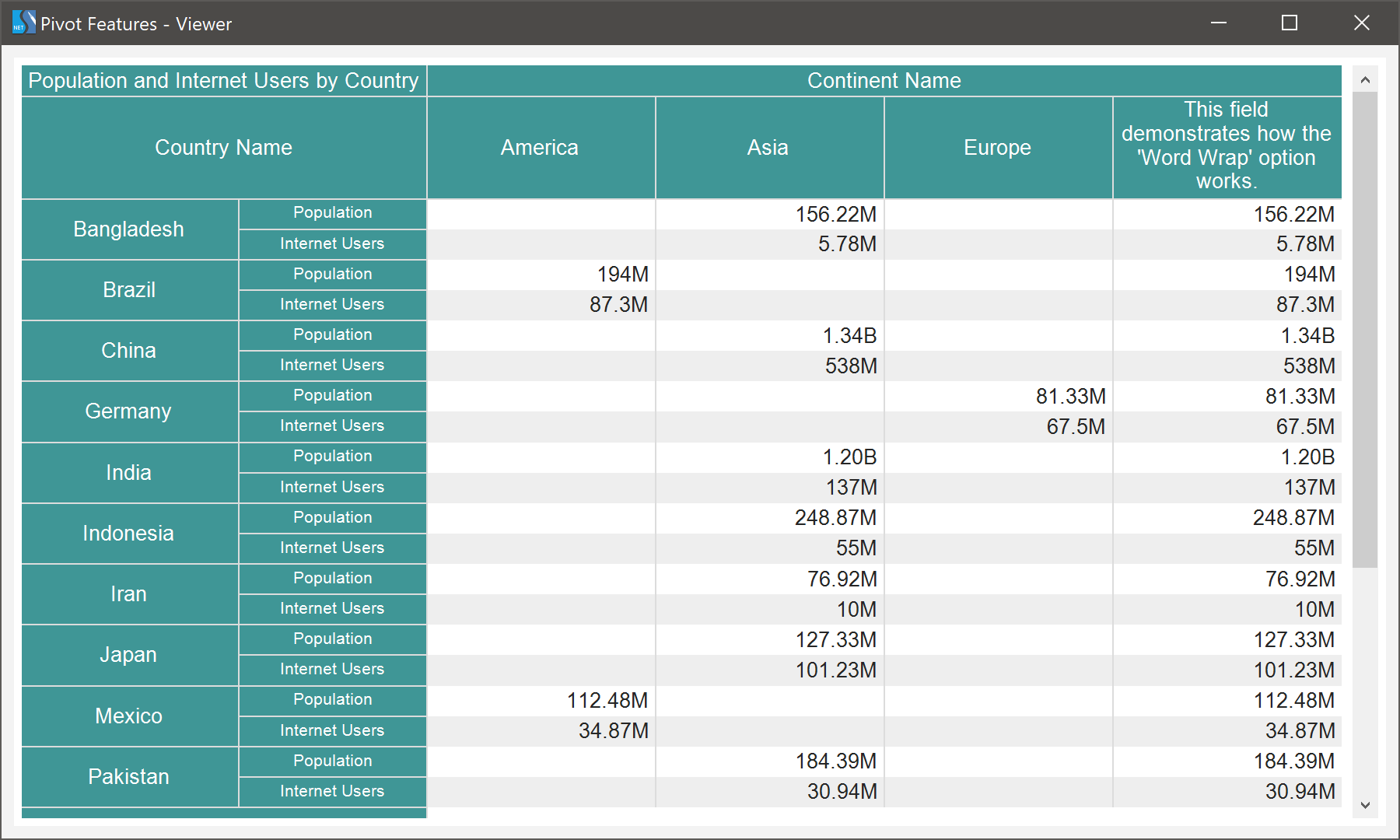
Support for PDO data adapters for PHP
The new version comes with support for PDO drivers for all data adapters available in PHP. To use them, it is enough to specify the correct DSN prefix in the connection string, for example, "mysql:" or "sqlsrv:", and the data adapter will define the connection type.
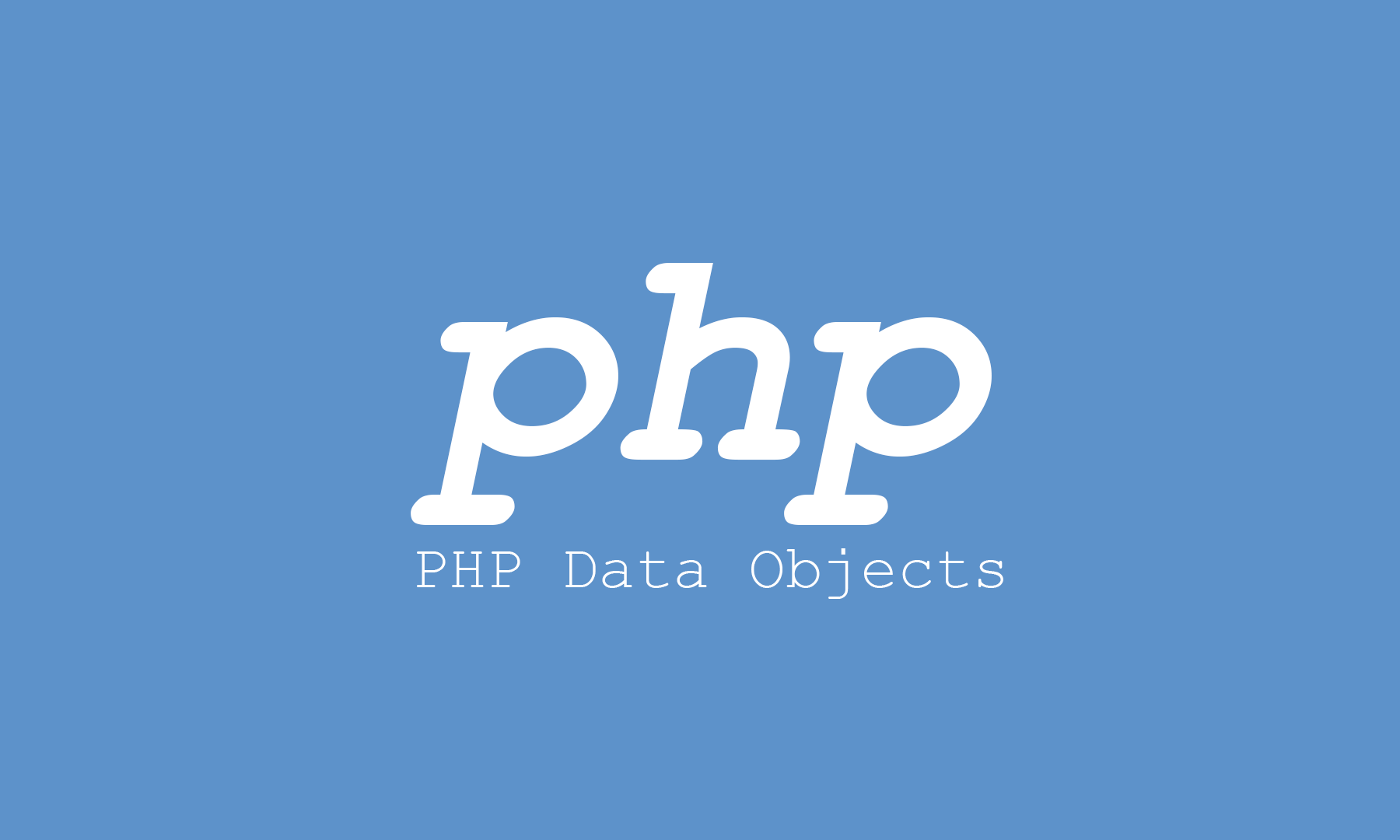
Team management from the designer
Now you can manage your user team directly from the report designer. Open the File menu, select Account, and the Team tab. Here you can add, edit, and remove your team members. The Account item also includes other settings and commands for managing the current account, which you may find on separate tabs.
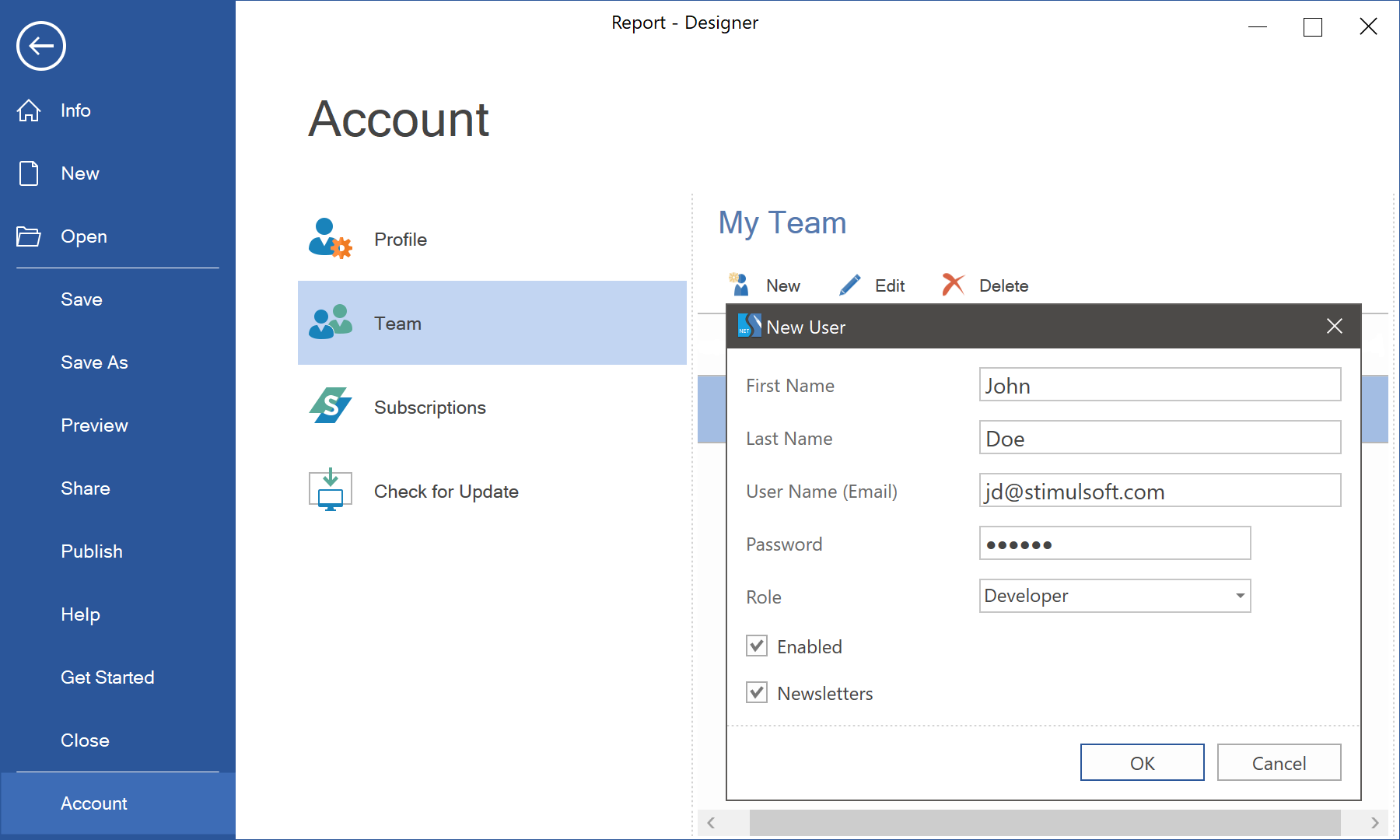
Compilation in .NET Core
In the new version, when using the .NET Core framework, we have added support for compilation for reports. Now you can use all the reporting tool features like compilation at runtime, functions, publishing reports as classes. Compilation for .NET Core 3.1 is only available on Windows systems, and .NET 5.0 is available on all supported systems.

The new component - Table of Contents
In the 2021.1 release, we added a new report component - Table of Contents. This component will help you create an interactive table of contents for your report without writing any code or scripts. Just add it to the template and mark the report component for which you want to generate content. When the report is rendered, a table of contents with navigating the report will be generated. You may find this component in the items list from the Bands menu on the Insert tab.

The new adapter - Google BigQuery
Starting with this release, directly from the report designer, you can connect to the online service - Google BigQuery. To do this, in the data source creation window, select the BigQuery type, fill in the data storage access fields or use an authorization file. Once you have the data, you can create reports and dashboards from it.

Cross-filtering of elements
Starting with release 2021.1, you can define whether to filter data from other elements to the current element. Each dashboard item now has the Cross-Filtering property. If this property is set to False, then filters from other elements will not affect the current element.

Horizontal filtering
The List Box filtering element is available in the report designer since the first release of dashboards. It is a vertical list of values on the dashboard panel by which you can filter dashboard data. Starting with release 2021.1, you can display the values of a List Box item as a horizontal list of values. Open the element editor and set the Orientation parameter to Horizontal.

The new functionality for Table
Starting with version 2021.1, we have expanded the capabilities of the Table element in the dashboard. For the Table element, you can specify the required number of fixed columns that will not change their width. For each column of the table, you can set its width or range of width and enable the ability to wrap words in the column. Besides, when viewing a dashboard with a Table element, you can change the columns' order by simply dragging the column to the required location.

The new functionality for Pivot
Now, when using the Pivot element on the dashboards, you can flexibly customize it. First, as for the Pivot element, you can specify the column width and enable wrapping the words. Second, you can disable displaying totals for columns or rows of the Pivot element, and, if necessary, you can change the header of the summary column or row.

Support for PDO data adapters for PHP
The new version comes with support for PDO drivers for all data adapters available in PHP. To use them, it is enough to specify the correct DSN prefix in the connection string, for example, "mysql:" or "sqlsrv:", and the data adapter will define the connection type.

Team management from the designer
Now you can manage your user team directly from the report designer. Open the File menu, select Account, and the Team tab. Here you can add, edit, and remove your team members. The Account item also includes other settings and commands for managing the current account, which you may find on separate tabs.
